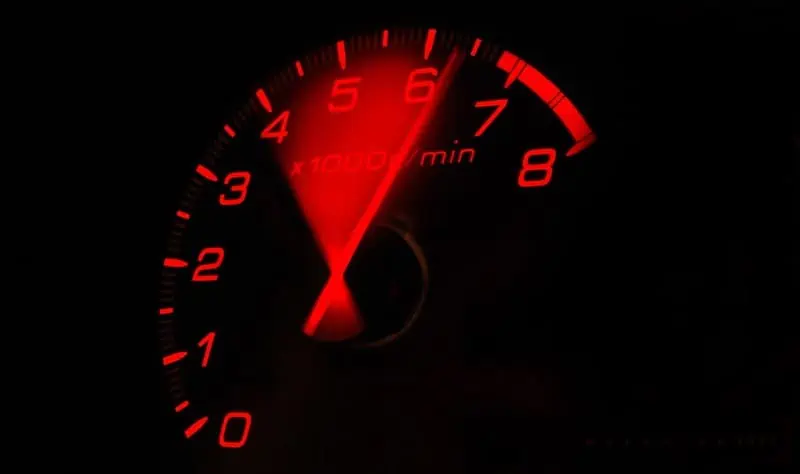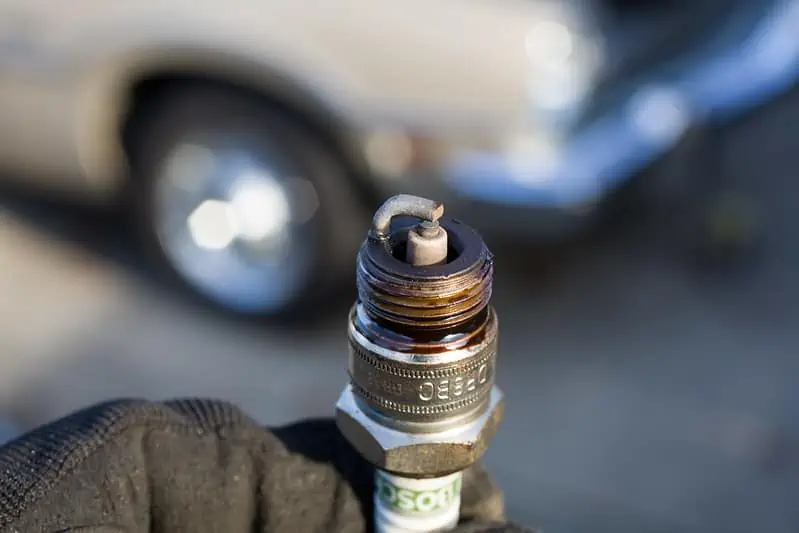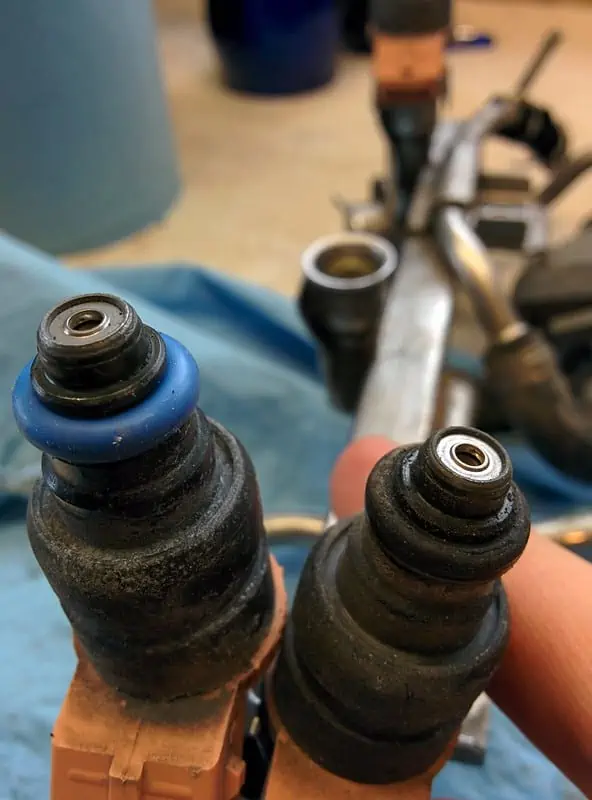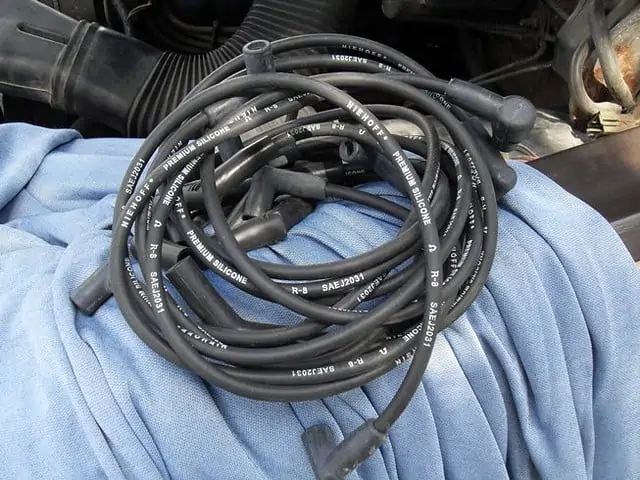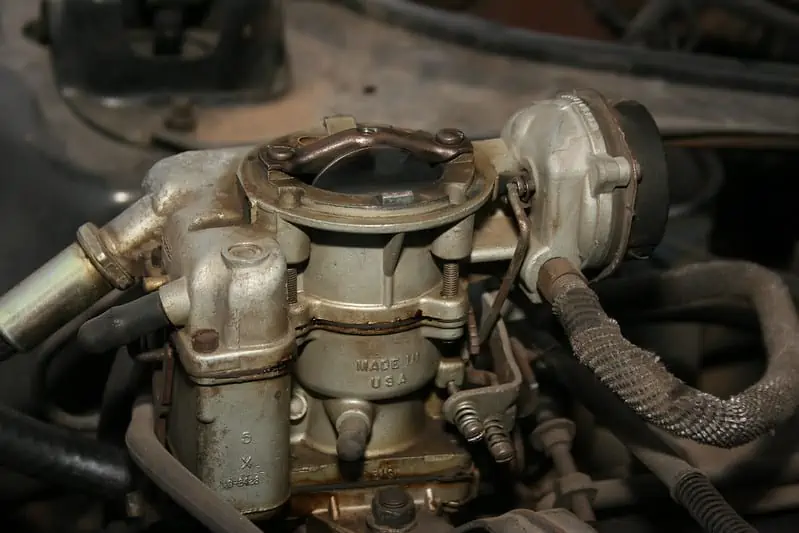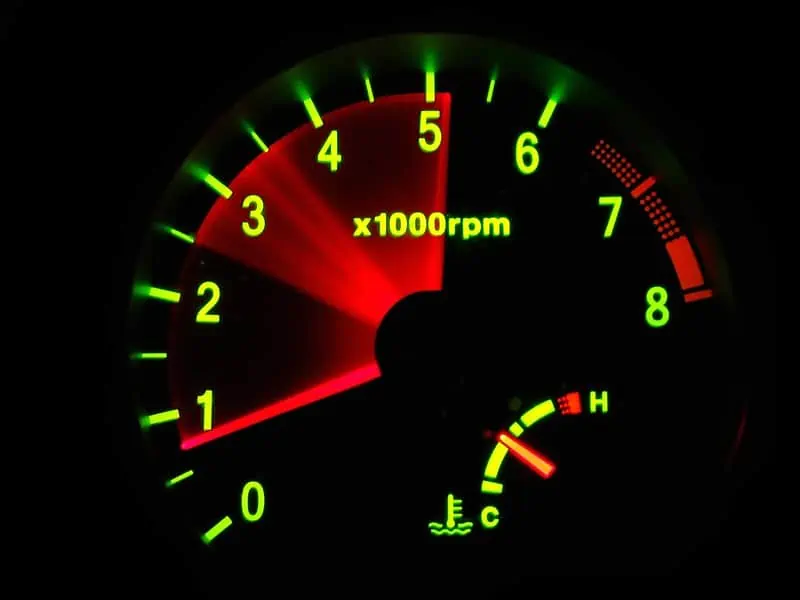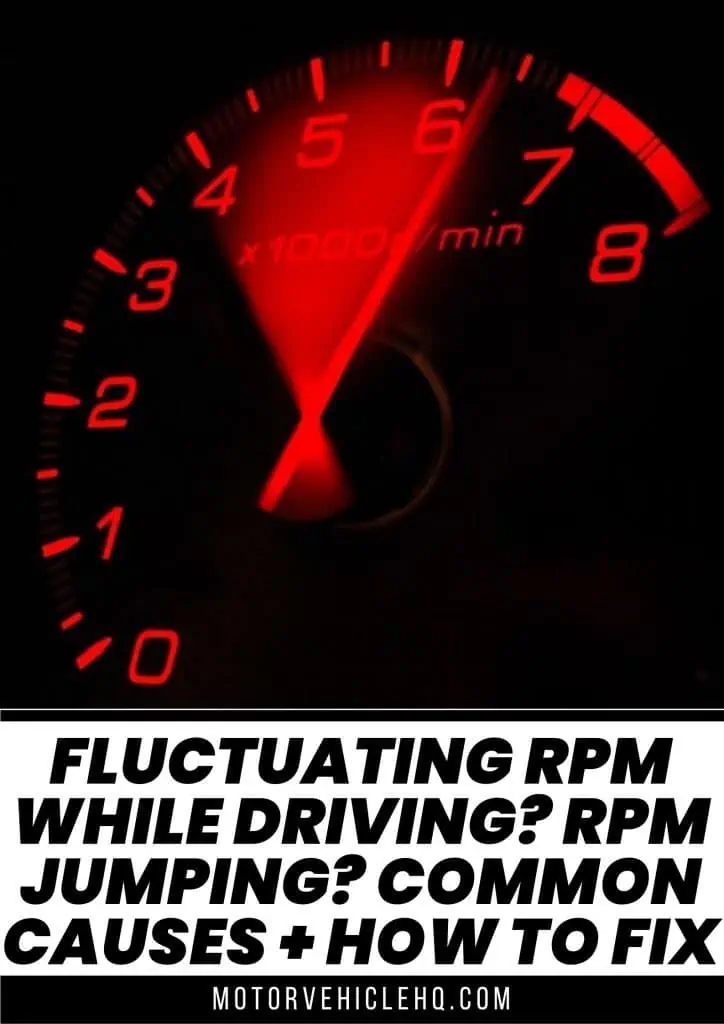One of the most common problems people have with their vehicles is fluctuating RPM while driving. The RPM of your engine is a measurement of its speed. If it is fluctuating, it suggests it is changing speed erratically, which can be a severe issue.
When you start your vehicle, the RPM gauge should read about 1000. It should reduce to around 800 after the car warms up. The reading should be between 750 and 850 while driving. Your engine is spinning too rapidly if the RPM exceeds 1000. So why is this taking place? And how are you going to solve it?
But what does RPM mean?
An analog tachometer showing the RPM of a vehicle by Mik Salac / CC BY-NC-ND 2.0
RPM stands for Revolutions Per Minute, and it refers to the rate at which your car’s engine operates. RPM measures how many times your car’s engine crankshaft rotates fully per minute and how many times each piston moves up and down its cylinder.
Taking what we discussed previously, you can also argue that your car’s RPM increases when you press the accelerator and decreases when you apply the brake. However, RPMs and car engines do not have the same limit, meaning that engines do not necessarily produce their maximum power at the highest RPM.
Take a look at your engine’s specifications to get an idea of the highest RPM your car can have and the engine power it can produce. If you see something like ‘252hp at 5,600RPM,’ it implies that at 252 horsepower, your engine crankshaft makes 5,600 complete rotations per minute (which is usually the maximum number of RPMs your vehicle can make in a minute according to your engine’s specifications).
How Do You Know Your Car’s RPM?
Almost every automobile has a tachometer, which calculates your engine’s RPM, usually measured in thousands, and displays it on your dashboard, which is occasionally adjacent to your speedometer. Tachometers are also known as revolution-counter, tach, rev-counter, and RPM gauge. All tachometers fall into one of four categories: analog tachometers, digital tachometers, contact, and non-contact tachometers, and time and frequency measuring tachometers. In the past, tachometers displayed RPMs in an analog style. However, modern cars are beginning to adopt digital, making it easier to read.
As the first two tachometers are the ones you can find in your car, we will be going into them briefly.
Analogue Tachometers
This type of tachometer consists of a needle and a dial-type interface. They are unable to store readings and cannot compute details such as the average RPM of your car and things like that.
Digital Tachometers
Digital tachometers are made of LCD or LED readouts and have memory storage capacity. They can perform statistical calculations and are more common in recent times, unlike their analog counterparts. They provide numerical values instead of using dials and needles.
RPM Fluctuation and Common Causes
If you drive often, you have probably observed that your RPM fluctuates regularly. This is frequently indicated by the inconsistency of your car’s speed and the constant adjustment of your tachometer in an attempt to provide an accurate reading. However, if your vehicle’s RPM swings so much that it looks to be moving back and forth, it is critical to have it checked because this could be an indicator of an underlying problem.
If you notice your RPM fluctuating while you drive, it is most likely due to one of these common reasons:
Worn-out Spark Plugs
The most common reason for RPM fluctuation is that your spark plugs are worn-out, especially when dealing with old cars. Worn-out spark plugs cause RPM fluctuation because they are unable to correctly fire the fuel within the piston at the right time. This will result in sluggish acceleration, which might lead to more misfires and jerking of your vehicle.
Spark plug by Robert Couse-Baker / CC BY 2.0
If your spark plug wires or ignition coil have also gone bad, you might notice this effect on the RPM. The cost of changing worn-out spark plugs is between $16 and $100 for a set, depending on the type of plug and number of cylinders your car has.
Faulty Throttle Pedal Position Sensor (TPS)
If your automobile’s Throttle Pedal Position Sensor (TPS) fails, your car may accelerate without you pushing the gas pedal. This can lead to RPM fluctuation while driving. Another sign that your Throttle Pedal Position Sensor is faulty includes engine misfire. The average cost for a new throttle pedal position sensor ranges from $110 to $200, with labor costs between $35 and $95, depending on your location.
Dirty Fuel Injectors
When your fuel injectors become coated with dirt and grime, acceleration may become jittery, causing your RPM to fluctuate.
Worn out and new fuel injectors by Anson Chappell / CC BY-NC-ND 2.0
In general, your vehicle’s performance will be subpar to its usual performance, which will also reduce your vehicle’s fuel efficiency.
Transmission Issues
If your car has transmission problems, such as a transmission fluid leak, it may begin to rotate at higher RPMs as a result of the torque converter, or the gearbox band slipping.
Ignition Wire Damage
If your car’s ignition wires are broken or frayed, it can cause resistance in the electrical current and cause your engine’s idle speed to fluctuate. When this happens, your RPM will rise and fall unpredictably and totally out of your control.
New ignition wires by Zal / CC BY-NC 2.0
If you fear that your ignition wires are damaged, you should have them inspected and, if necessary, replaced.
Bad Idle Air Control Valve
Another reason your RPM fluctuates could be a faulty Idle Air Control valve (IAC). The Idle Air Control valve is usually located on the throttle body of fuel-injected engines, where the Idle Air Control valve communicates with the Electronic Control Unit to regulate the airflow. When you notice these RPM fluctuations, they are usually a result of communication issues between these parts. If the Idle Air Control Valve (IAC) and the Electronic Control Unit (ECU) become entangled, they will be unable to work effectively, resulting in RPM variations. A faulty Air Control Valve can cost between $120 and $500 to replace, with labor costing between $50 and $100.
Carburettor Problems
When your carburetor isn’t working properly, it can produce RPM fluctuations while driving.
Carburetor of a 1975 Comet Mercury by Jim Hutchinson / CC BY-NC-ND 2.0
It can also cause a rough idle if it is clogged since it does not give enough gasoline to the engine.
Incorrect Valve Timing
If your valve’s timing is incorrect, it will be difficult for your engine to operate, causing RPM fluctuation while driving. This is because incorrect valve timing will affect the air-fuel mixture, hampering your car engine’s power. To repair this, you can simply have your valve timing checked out although, in serious situations, you may need to purchase a new valve timing belt with labor costs between $300 and $500. The belt in addition to the labor cost is this expensive because your engine needs to be disassembled to reach the valve timing belt and doing so takes both time and effort.
Problem with the Combustion Process
If something goes wrong with your combustion process, for example, an engine misfire, it can cause your RPM to fluctuate while driving.
Vacuum Leaks
A vacuum leak occurs when there is a blockage in the airflow of your vehicle’s Intake Manifold or exhaust system.If your car’s RPM fluctuates while you’re accelerating, it’s also possible that your engine has a vacuum leak rather than a faulty spark plug. Other signs of a vacuum leak other than RPM fluctuation include lesser fuel efficiency, the check engine light being turned on, a hissing sound, car stalling, and a rough idle.
What is the Importance of your car’s RPM?
The importance of your car’s RPM depends on the type of transmission. There are two types of transmission; manual and automatic transmissions. If your vehicle has an automatic transmission, the RPM is unimportant since your vehicle calculates the number of engine cycles (number of turns) and instructs the engine to change to a different speed/gear, either higher or lower.
For cars that use manual transmissions, the importance of RPM is:
- The first importance of your RPM is that it inspects the number of engine cycles and then uses this information to determine whether it is proper for your car to move to a higher or lower speed.
- When used properly, your RPM protects your engine and gearbox from overheating.
- It ensures smooth transitions from one speed to another (higher or/and lower).
- This smooth transition protects your car from making vibrations and your engine stopping abruptly.
- RPM gives an idea of the performance of your car engine and helps maintain it thereby increasing its lifespan.
- RPM warns you when you are endangering your engine. Tachometers, which are used to read RPMs, are made up of nine numbers: 0-8, which at the back of your mind, as stated earlier, is calculated in 1,000s. When your tachometer reaches and exceeds 6, meaning an RPM of 6,000 and greater, it becomes a warning that you are endangering your engine.
How Does RPM help in Maintaining Fuel Consumption?
With RPM, you can make your transmission gearbox and engine work at optimal efficiency. Because the lower the RPM, the lower your car’s fuel consumption and speed, you can use your tachometer and speedometer to find the range where your vehicle balances performance and fuel economy. This range is usually when your RPM is between 1,500 to 2,000. This will help you save fuel.
How to Fix RPM Fluctuation while Driving
Image depicting a fluctuating tachometer by Michael / CC BY 2.0
There are a few things you can do if your RPM fluctuates while driving so the first thing you have to do is make your car idle, that is, make your engine run while your car remains at rest. If you find out that the reason for your RPM fluctuation is your engine, the only solution is to replace it. A four-cylinder engine replacement typically costs between $4,000 and $5,000. The average cost of a V6 is $5,500, and a V8 engine is $7,000 on average. However, the price is more likely to rise based on the automobile brand and engine complexity. A powerful high-performance engine can cost up to $10,000.
If the cause for your RPM fluctuation is not your engine, other things you can do before seeking the service of a mechanic are:
- Check that your engine is correctly tuned.
- Check the Air Intake System for leaks, as they might cause your car’s RPM to fluctuate.
- Make sure the throttle body is neat and free from obstructions. Throttle body with obstructions causes RPM fluctuations.
- If your spark plugs are worn out, you can change them without the help of a mechanic. Steps to change a spark plug are:
- Blow the dirt around the plug.
- Use the proper size of the spark plug socket over the plug.
- Rotate the socket anti-clockwise to loosen it.
- Check the engine vacuum to ensure there are no leaks, as this might cause your RPM to fluctuate while driving, as discussed earlier in this post.
- Replace the fuel filter if it is clogged or dirty. The cost of a new fuel filter depends on your car brand. However, the price is usually between $10 and $70. With labor costs added, you should budget between $50 and $175.
- Examine the engine compression and make sure it is within spec as this can also cause RPM fluctuations.
- If the problem persists, have your car inspected by a trained mechanic, since only they can effectively inspect and rectify RPM fluctuations.
Conclusion
There are a few things you may do if your vehicle’s RPM reading is not staying stable. The simplest solution is to ease off the gas slightly until the engine slows down. You can also try increasing your RPM slightly until you obtain a more steady readout. Another thing you may do is check your oil level to ensure it is not too low or unclean. Finally, if you have difficulties starting your automobile in chilly weather, consider warming it up first. Otherwise, it may be difficult getting it to turn over at all. Contact a professional if you still need assistance bringing your RPM back to normal.
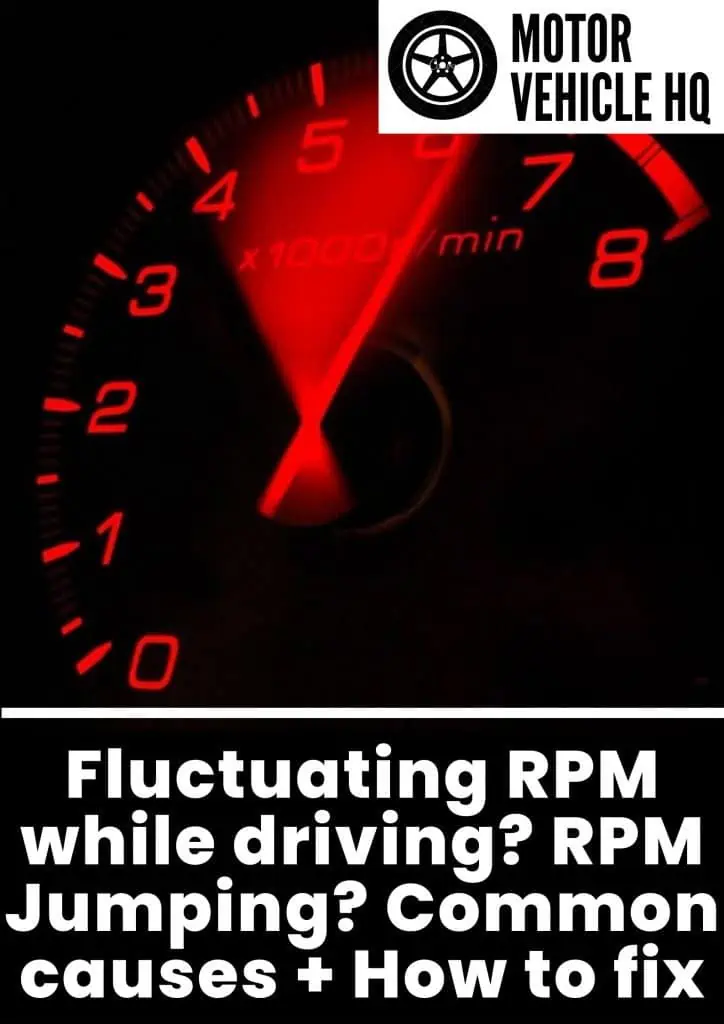

Jim Wicks is the founder of MotorVehicleHQ. With over two decades of experience in the automotive industry and a degree in Automotive Technology, Jim is a certified car expert who has worked in various roles ranging from a mechanic, car dealership manager, to a racing car driver. He has owned more than 20 cars over the past 15 years. Ask him about any vehicle you see on the road and he can tell you the make, model and year. He loves the aesthetics of all things cars, and keeps his vehicles in pristine condition.
In his free time, Jim enjoys getting his hands dirty under the hood of a classic car or taking long drives along the country roads. His favorite car? A 1967 Shelby GT500, a true classic that, according to Jim, “represents the pure essence of American muscle.”
